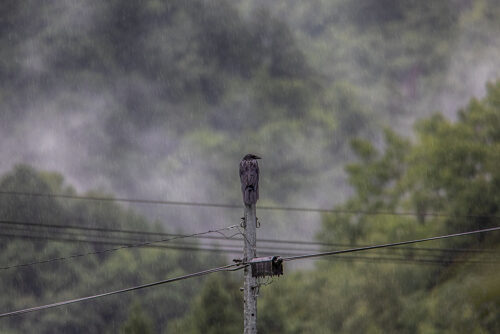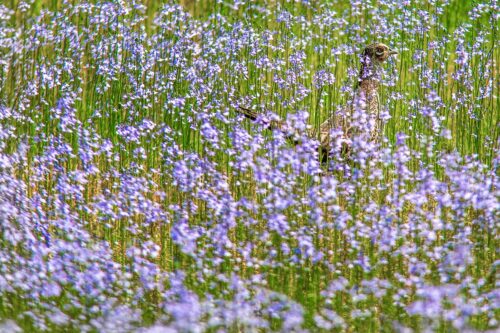There is a double meaning to the title here. Not only are the birds in these two photos of a different species, the subjects are also different than what I intended to shoot. And, by chance, these photos ended up being more successful than my original intentions.
First, a crow perched on a pole:
On a rainy day, I heard the call of a tonbi black kite outside my window. This surprised me, as I usually see kites active only in fair weather. Looking out, I saw a kite perched on top of this utility pole. I ran to get a camera with a long lens, but when I returned to the window, I found that a crow had usurped the kite’s throne. I often see kites and crows squabble in my neighborhood, and crows are usually the victors in one-on-one confrontations.
Disappointed, because crows are much more common than kites, I took several shots anyway. Processing the photos, I realized that although a shot with a kite might have been of more abstract interest, the crow fit the dark, rainy scene much better. Exhibiting this photo in a group show, I entitled it The Usurper.
Second, a pheasant in a field of wildflowers:
Another time I heard a bird outside my house, it was the loud squawk of a male kiji pheasant. Again, looking out a window, I saw both the male and his mate foraging in a grassy field near my house. This time, after picking up my camera, I walked outside to try to get the shot. Noticing a patch of matsuba unran blue toadflax wildflowers blooming in a fallow paddy in the distance, I started to slowly walk toward the pair of birds, advancing left and right, hoping to herd them toward the flowers.
My goal was to get a shot of the male, the more colorful of the species, among the flowers. But, again, my initial hopes were dashed when the male suddenly flew off. However, his mate, the more drably colored female, scurried into the paddy, trying to blend in with the foliage. And, again, this image, of the female with its pattern of dark and pale brown plumage among the flowers and leaves, created a better composition than my original plan. The colors of a male pheasant, with its bright red wattle and green breast, would have clashed with the flowers of the blue (actually, a more purplish color) toadflax.

